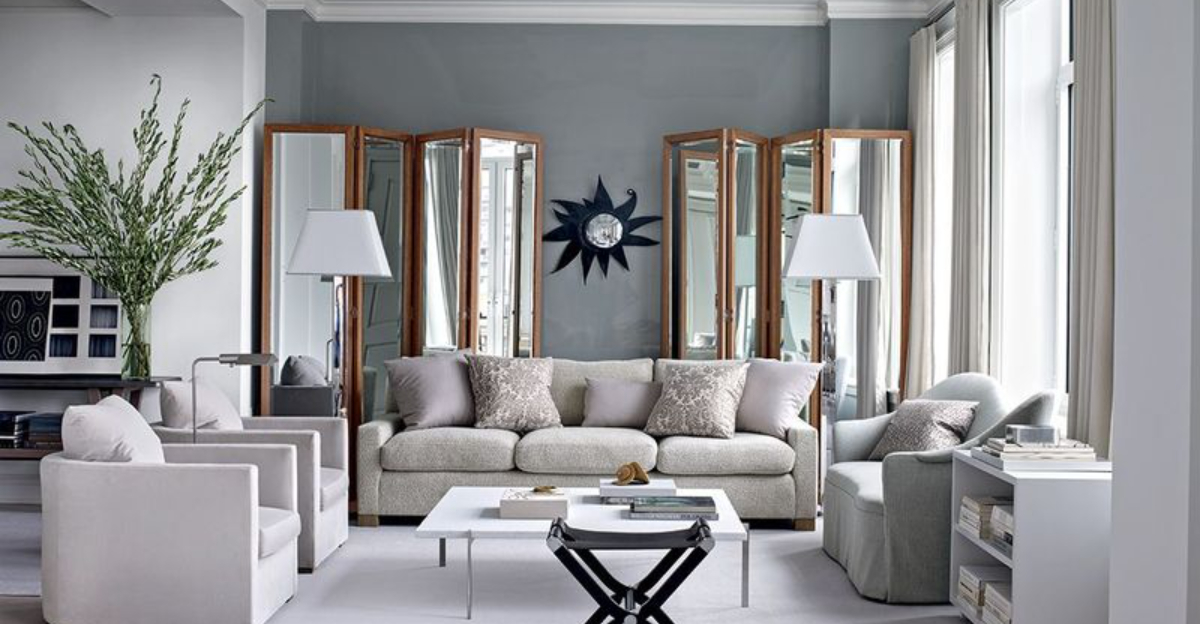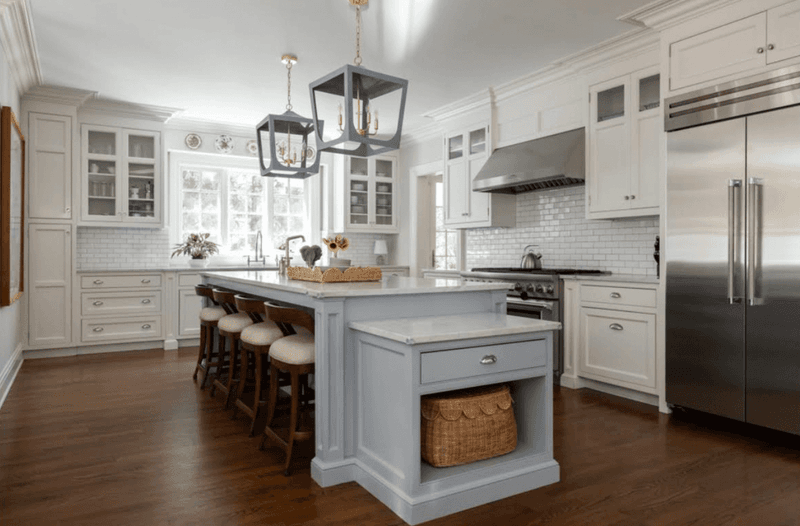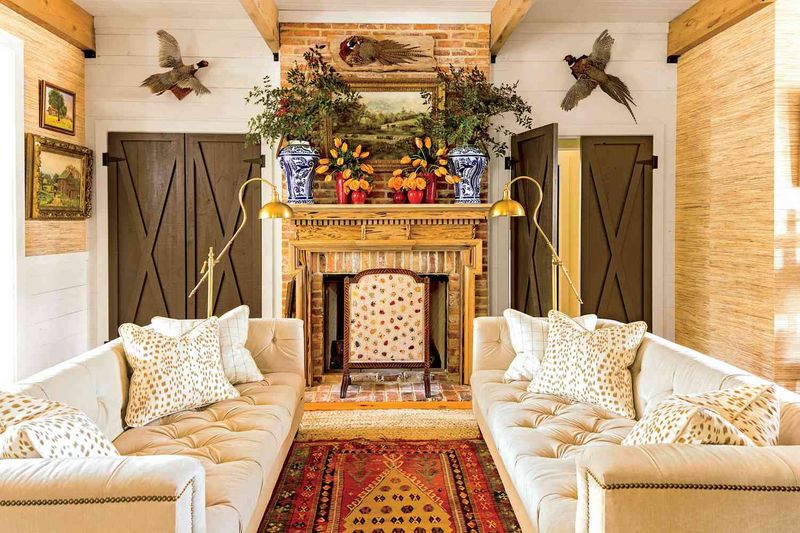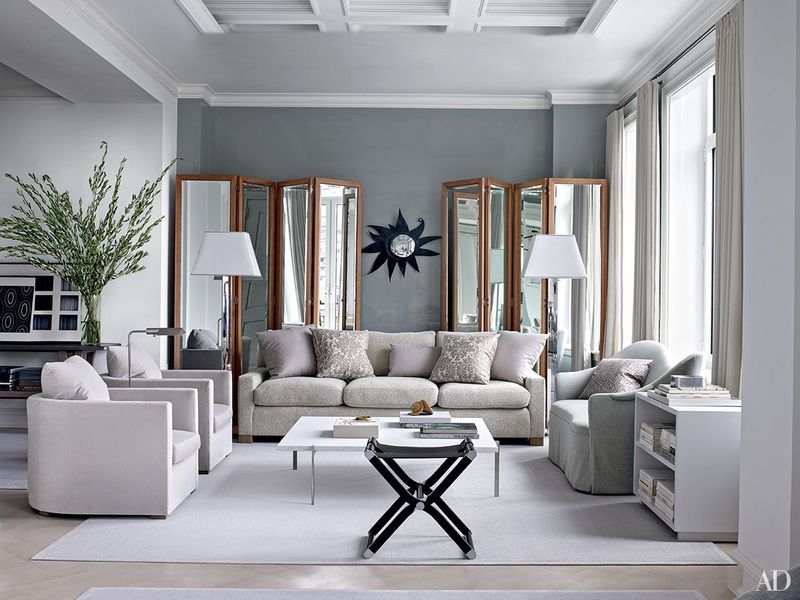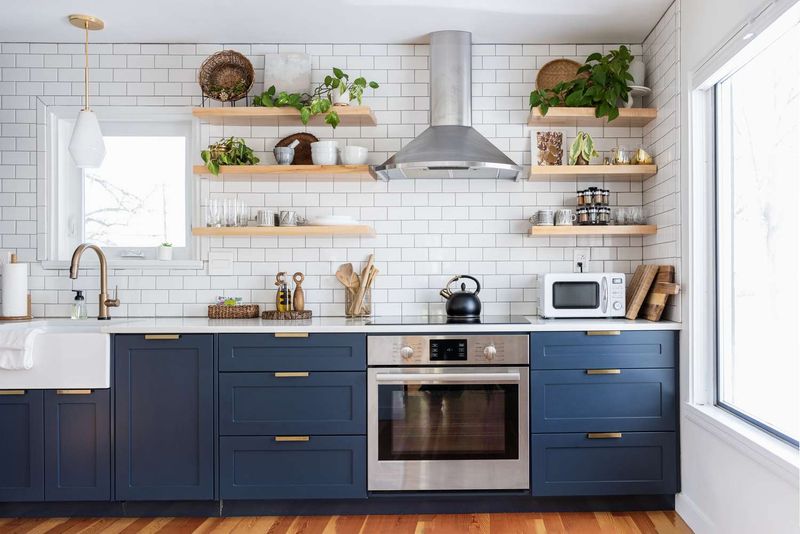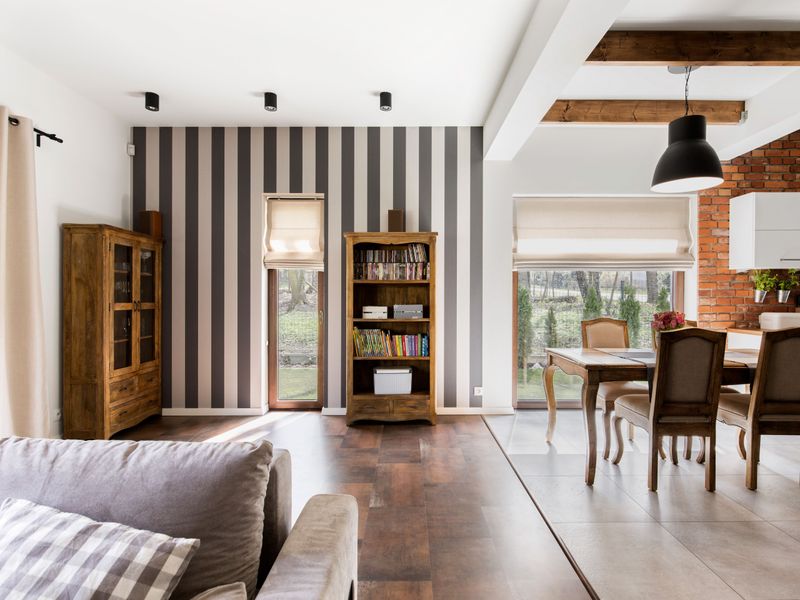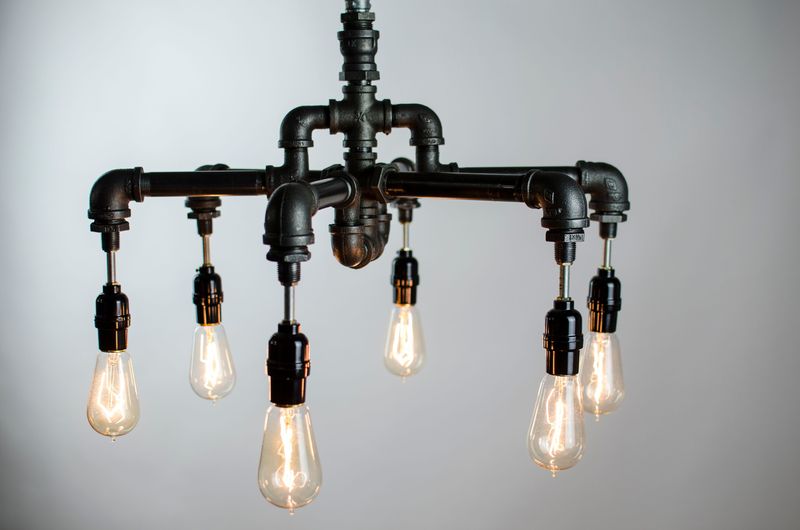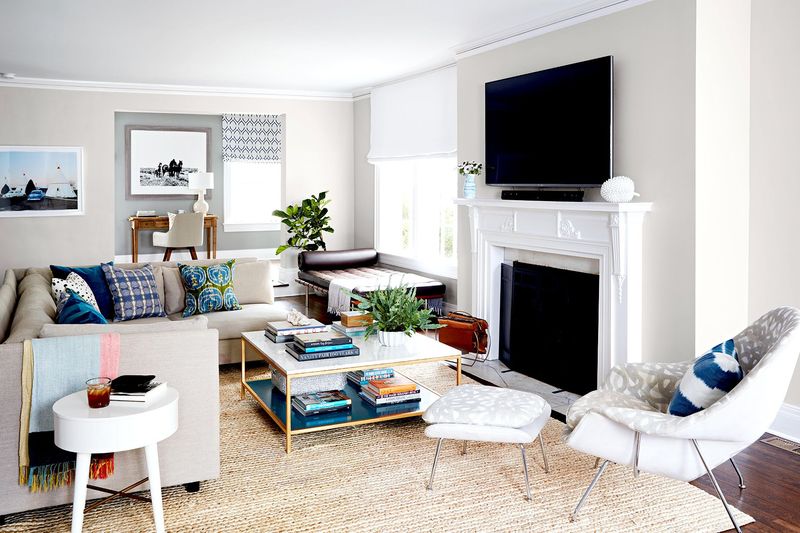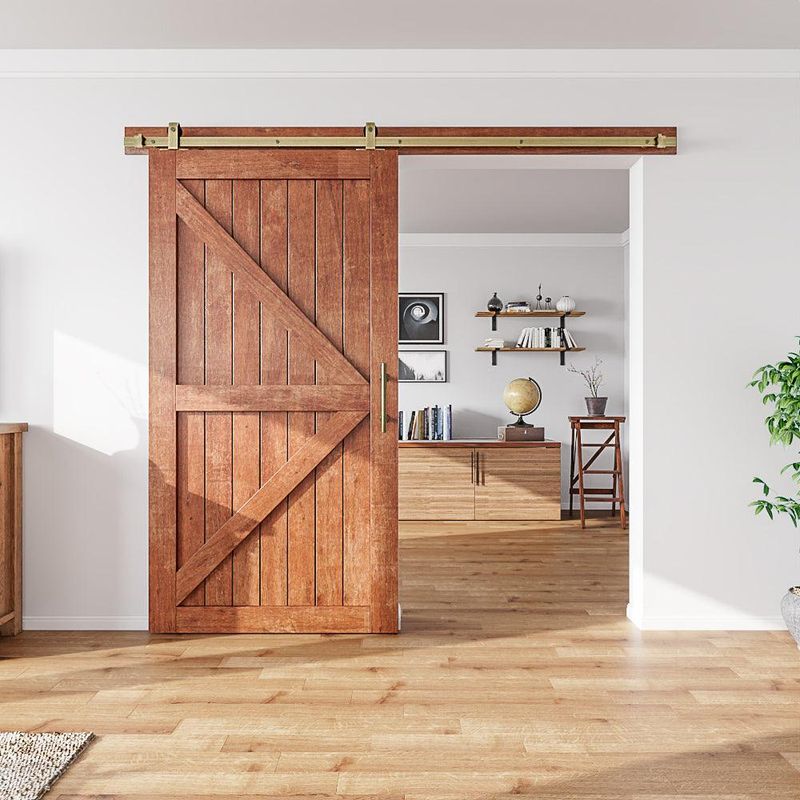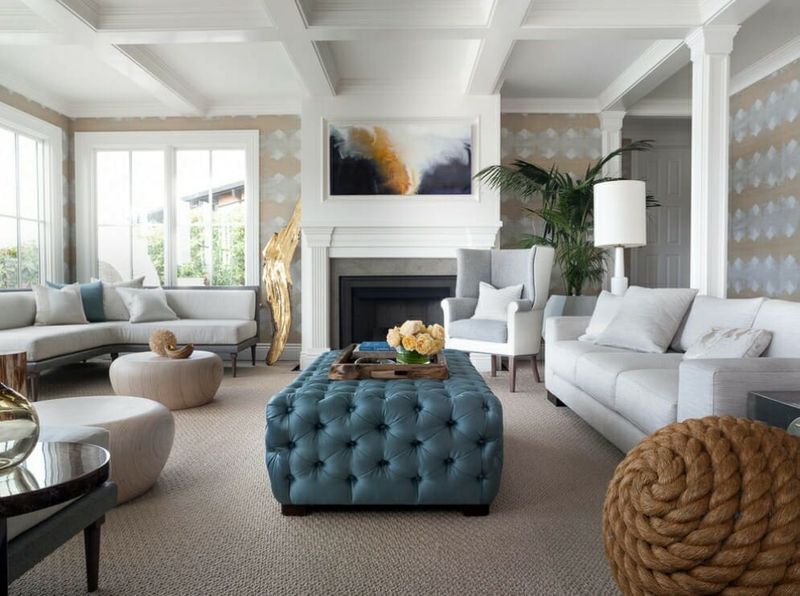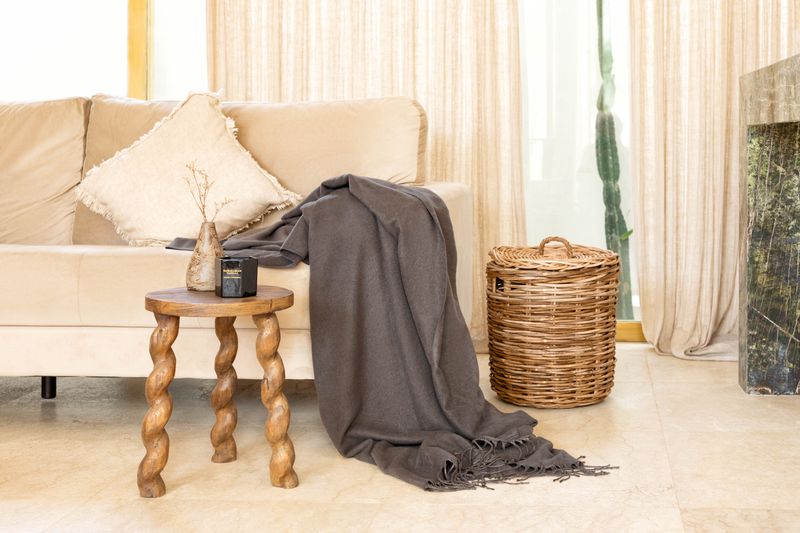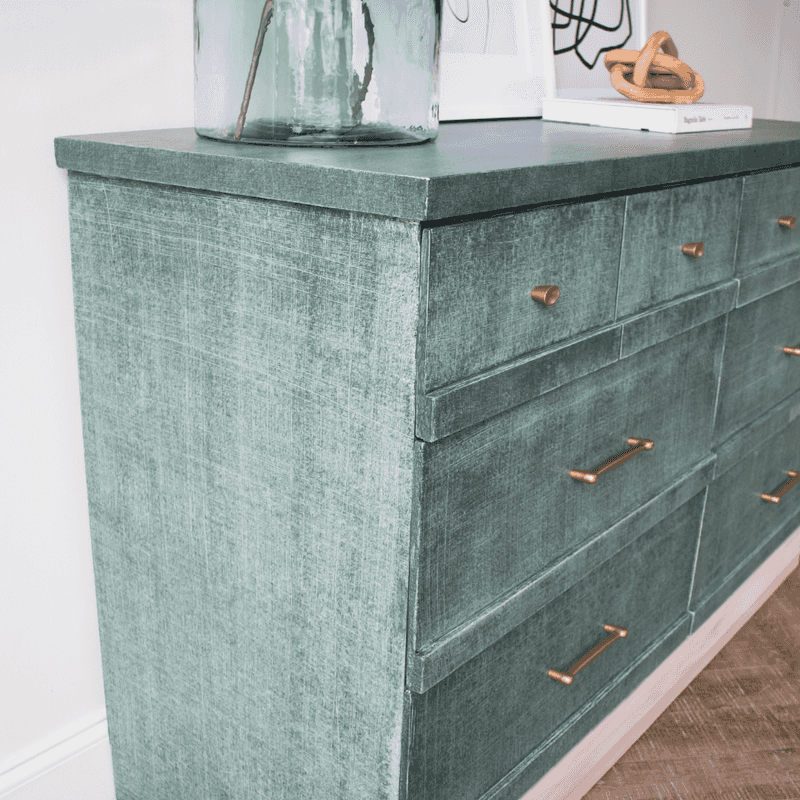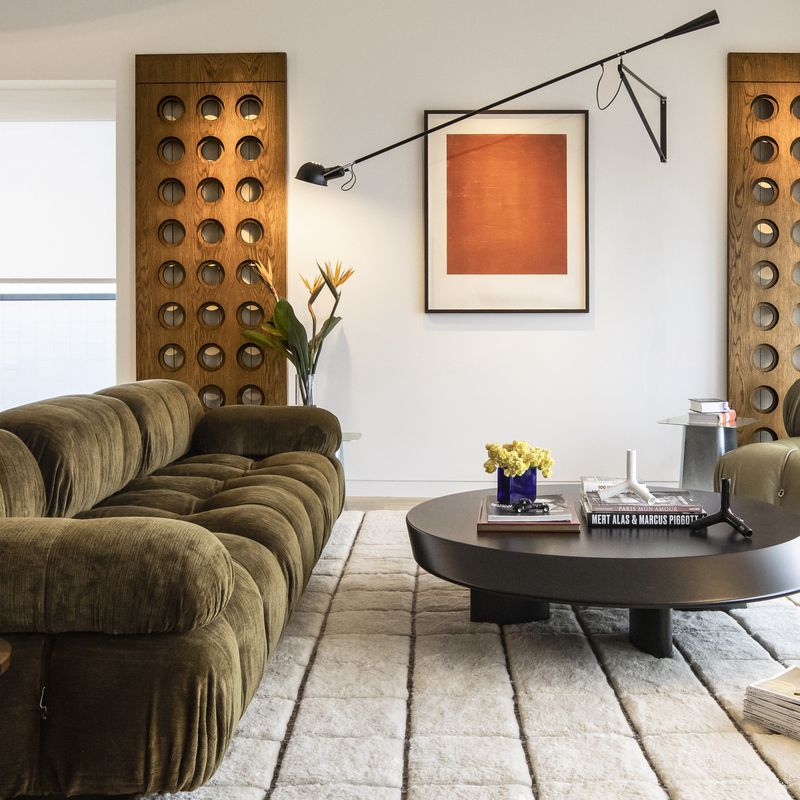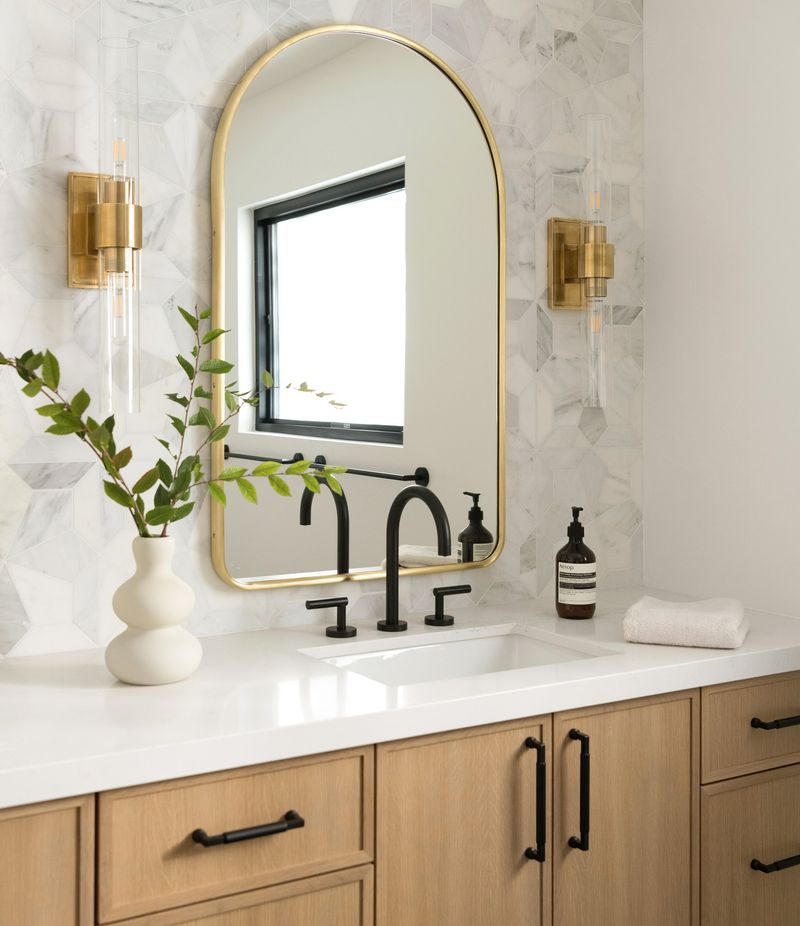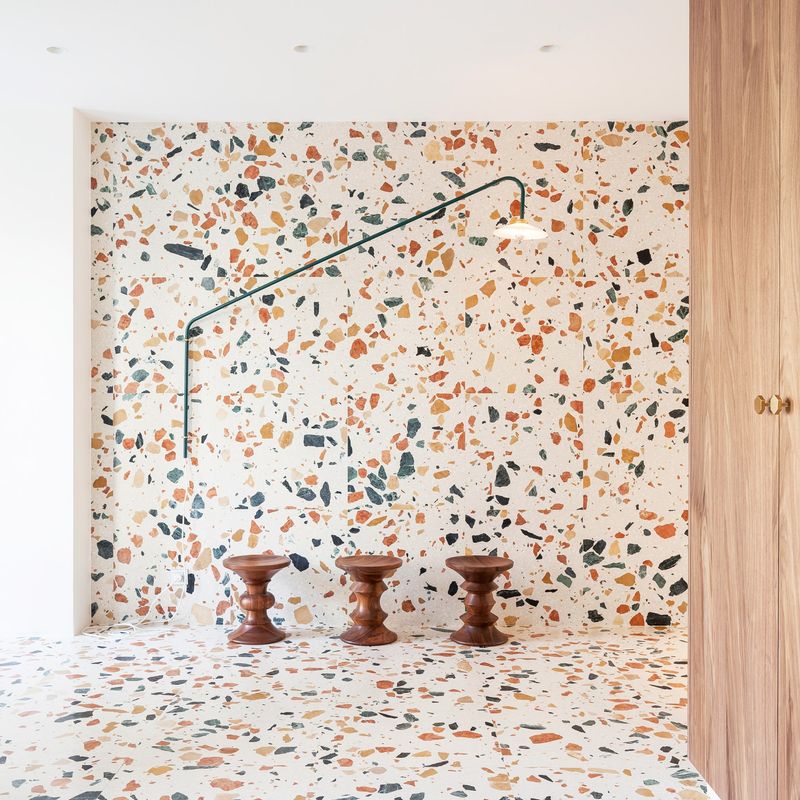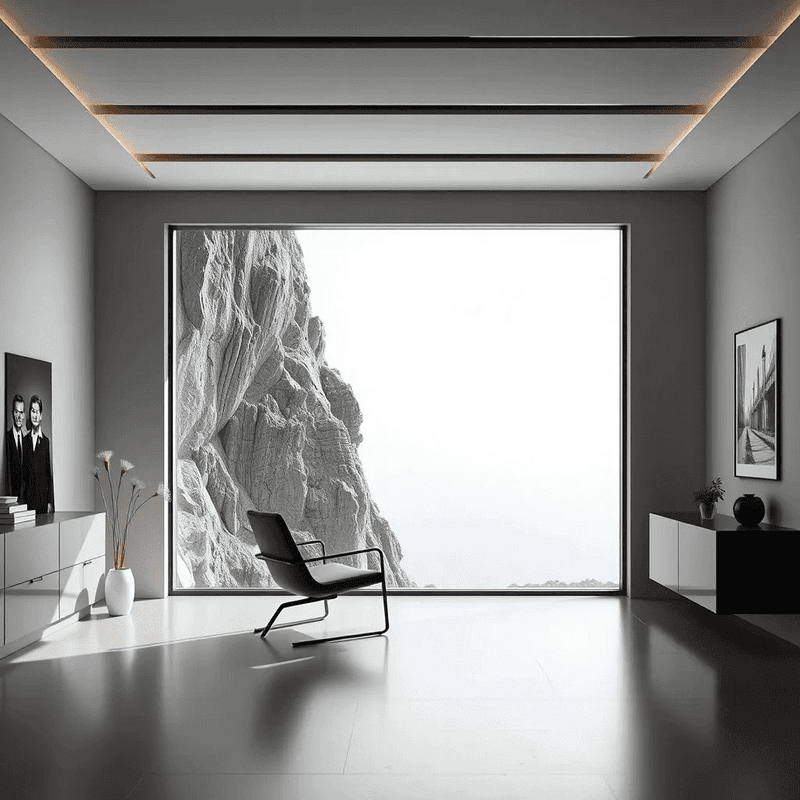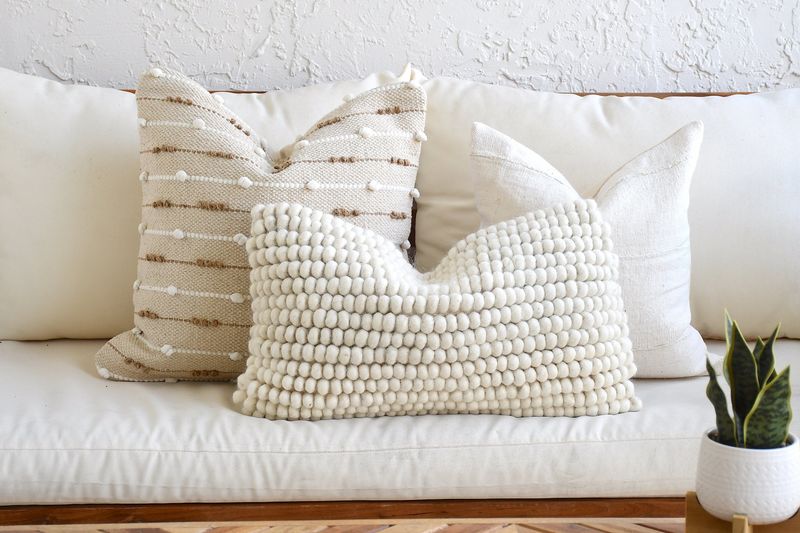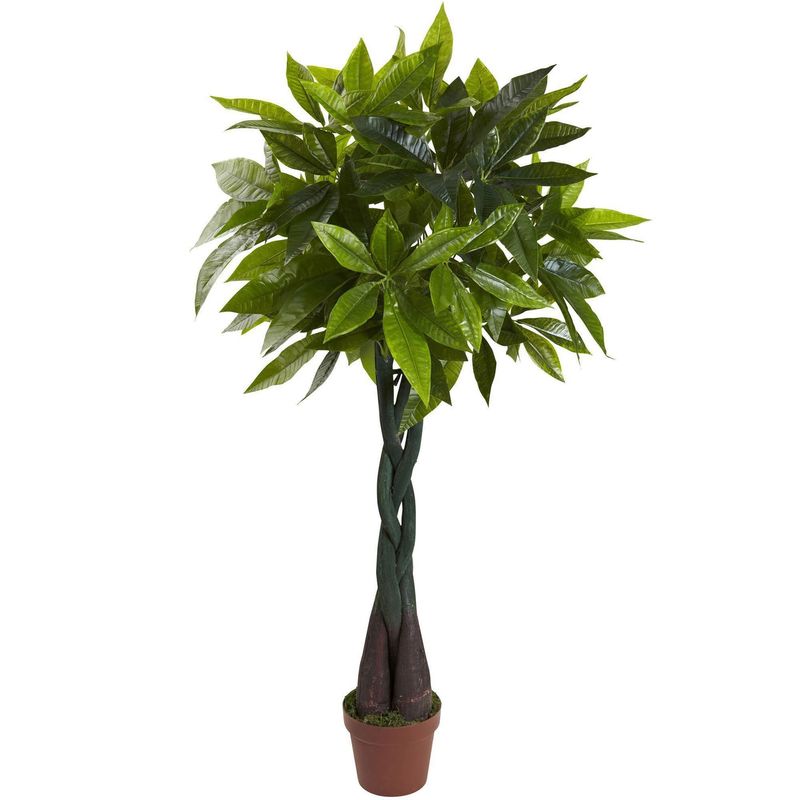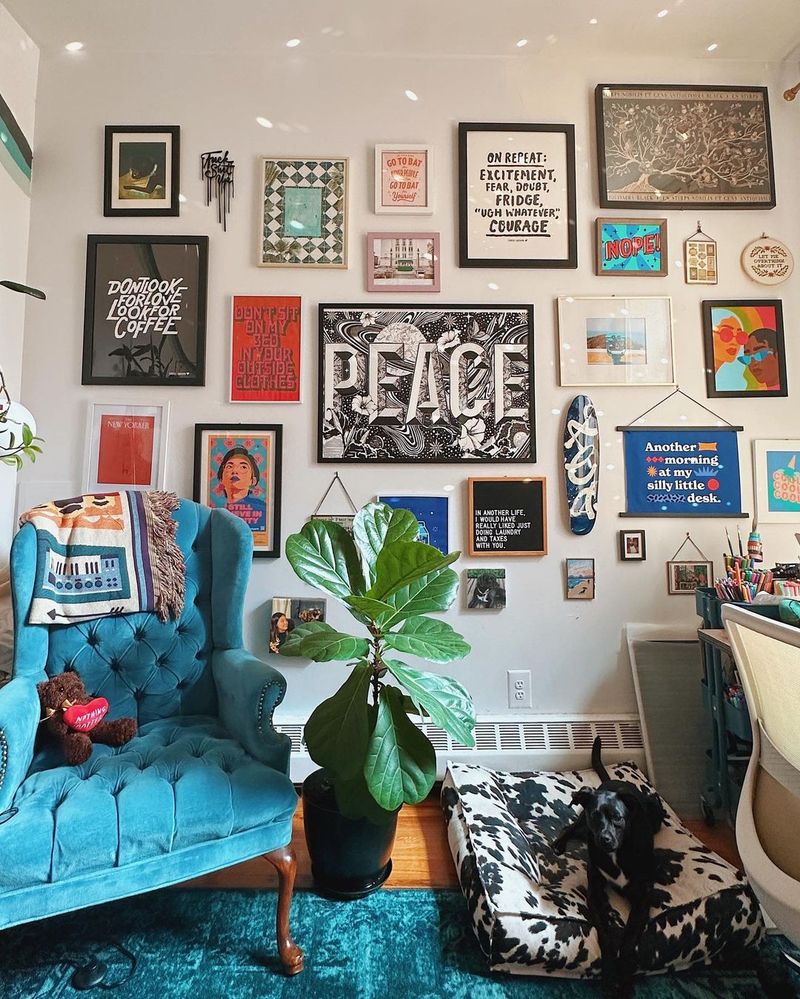Some trends have their moment – and then seriously overstay their welcome. As 2025 unfolds, interior designers are gently (or not so gently) urging homeowners to leave a few once-popular looks behind.
What might’ve felt stylish a few years ago can now make a space feel tired, cluttered, or just plain outdated.
Thinking about giving your space a little upgrade? Before you start, it’s worth checking if your current decor is stuck in a style rut. Designers have spoken – and these are the 19 trends they’d happily leave in the rearview mirror for 2025.
1. All-White Kitchens
Remember when pristine, clinical-looking kitchens were all the rage? That era is officially over. Designers are now embracing warmth and personality through colored cabinetry and mixed materials.
The sterile laboratory feel has lost its appeal as homeowners seek spaces that feel lived-in rather than showroom-perfect. Consider introducing wood tones, textured tiles, or even a splash of color to breathe life into your cooking space.
2. Farmhouse Everything
The overdone shiplap, barn doors, and ‘Live Laugh Love’ signs have saturated the market to the point of becoming visual clichés.
What once felt charming now reads as dated and unoriginal. If you still love rustic elements, try incorporating them more subtly—perhaps a single weathered piece rather than transforming your entire home into a fictional countryside retreat.
3. Fast Furniture
Just like fast fashion, disposable furniture has created a cycle of waste that’s falling out of favor. Those particle board bookcases and flimsy coffee tables aren’t just environmentally problematic—they’re also a poor investment.
Instead of buying cheap pieces that need replacing every few years, designers recommend saving for quality items that will last. Vintage hunting and secondhand shopping are gaining popularity as sustainable alternatives to mass-produced furnishings.
4. Gray-on-Gray-on-Gray
Walking into a completely gray home feels like stepping into a black-and-white movie—minus the charm. This once-trendy neutral palette has become the poster child for playing it safe.
Designers are now encouraging homeowners to experiment with actual colors again! Even if you’re color-shy, try incorporating sage greens, dusty blues, or warm terracottas. These hues add dimension and personality while still maintaining a sophisticated vibe.
5. Open Shelving Everywhere
Let’s be honest—most of us don’t have a perfectly curated collection of matching dishware to display. Open kitchen shelving requires constant styling and cleaning to look good, making it more of a chore than a design feature.
Designers are returning to the practicality of closed cabinetry, perhaps with a few strategic open shelves for truly display-worthy items. This balanced approach offers both storage and style without the pressure of maintaining a magazine-worthy display at all times.
6. Accent Walls
That single wall of bold color or busy wallpaper is starting to feel like a design cop-out. When you’re afraid to commit to a design element throughout a space, the result often feels disjointed rather than intentional.
Forward-thinking designers are either going all-in with color and pattern or creating more subtle continuity throughout rooms. Consider wrapping a pattern around all four walls at half-height, or using color in unexpected places like ceilings instead.
7. Edison Bulbs and Industrial Lighting
Once the hallmark of hip coffee shops, those exposed filament bulbs and pipe-inspired fixtures have become victims of their own popularity. Beyond being visually overdone, they’re often harsh on the eyes and inefficient energy-wise.
Lighting is evolving toward fixtures that make artistic statements while providing proper illumination. Look for sculptural designs, interesting materials, or smart lighting that can adjust color temperature according to time of day and mood.
8. TV Above Fireplace
Your neck called—it’s tired of craning upward during movie marathons! Mounting televisions above fireplaces has been a space-saving compromise that sacrifices both comfort and design integrity.
Designers are creating more thoughtful media setups that consider proper viewing height (generally at eye level when seated). Modern solutions include projectors, TV cabinets that conceal screens when not in use, or dedicated media walls that properly integrate technology with style.
9. Sliding Barn Doors
Unless you actually live in a converted barn, these chunky doors on exposed hardware tracks have lost their charm. They offer minimal privacy, frequently get stuck, and have become an overused shortcut to “character.”
Pocket doors provide the same space-saving benefits with a cleaner look. For visual interest, consider French doors, interesting panel designs, or even decorative screens that serve as room dividers while maintaining an open feel.
10. Matching Furniture Sets
Purchasing an entire bedroom or living room suite straight off the showroom floor is the design equivalent of wearing a head-to-toe outfit from a mannequin. The result feels impersonal and lacks the layered look that gives spaces character.
Curated interiors that combine different pieces with complementary styles tell a more interesting story. Mix materials, eras, and finishes while maintaining a cohesive color palette or design theme for a space that looks thoughtfully assembled rather than mass-produced.
11. Microtrends from Social Media
Guilty of rushing to recreate that viral TikTok DIY? You’re not alone. The acceleration of trend cycles through social media has led to homes filled with quickly outdated fads—remember the boucle everything phase?
Design professionals recommend taking a beat before jumping on trending bandwagons. Ask yourself if you genuinely love a look or if you’re just responding to its current popularity. Timeless design incorporates trends selectively rather than chasing every fleeting style moment.
12. Faux Distressed Furniture
Factory-made furniture with pre-applied “distressing” fools absolutely no one. Those artificially weathered finishes attempting to mimic genuine patina have become a hallmark of mass-produced mediocrity.
Authentic vintage pieces with natural wear tell real stories. If you love the worn look, designers suggest either investing in true antiques or purchasing quality new pieces you’ll actually use long enough for them to develop character naturally over time.
13. Oversized Furniture in Small Spaces
Jamming massive sectionals and king-sized beds into modest rooms is a spatial mistake that’s finally falling out of favor. When furniture overwhelms a space, the result feels cramped rather than cozy.
Scale-appropriate pieces that allow for proper circulation make rooms feel larger and more functional. Look for apartment-sized sofas, streamlined armchairs, and multi-functional pieces that serve several purposes without dominating the floor plan.
14. All-Matching Metallics
Gone are the days when every metal finish in your home needed to coordinate perfectly. That matchy-matchy approach to hardware, fixtures, and accessories feels unnecessarily rigid and dated.
Mixed metals add depth and interest when done thoughtfully. Try pairing warm metals like brass or copper with cooler tones like chrome or nickel. The key is intentionality—choose 2-3 metal finishes and repeat them throughout the space for a curated rather than chaotic feel.
15. Terrazzo Overload
While genuine terrazzo has a rich history in architecture, the printed terrazzo pattern slapped on everything from wallpaper to coffee mugs has reached saturation point. What began as a playful nod to mid-century design has devolved into a generic pattern without meaning.
If you appreciate terrazzo’s speckled aesthetic, consider actual stone surfaces or more subtle interpretations. Designers are moving toward natural materials with inherent variation rather than simulated patterns.
16. Minimalism Taken Too Far
Ultra-sparse interiors that prioritize emptiness over comfort have finally lost their appeal. Those eerily bare spaces with nowhere to set a coffee cup or display a cherished memento fail to reflect how people actually live.
The pendulum is swinging toward “warm minimalism” that maintains clean lines and thoughtful curation while incorporating texture, color, and personality. Designers now recognize that homes should feel lived-in rather than resembling sterile gallery spaces.
17. Fast Fashion Throw Pillows
Constantly swapping cheap, trendy pillows creates both environmental waste and a home that feels perpetually unsettled. Those budget accent pillows with of-the-moment patterns rarely stand the test of time visually or structurally.
Quality textiles with timeless appeal make for better investments. Consider handcrafted pillows made from vintage fabrics, small-batch textiles, or classic patterns that won’t look dated by next season. Fewer, better pillows create more impact than a revolving door of disposable decor.
18. Faux Plants Only
Artificial greenery has improved dramatically, but rooms filled exclusively with fake plants lack the vitality and air-purifying benefits of the real thing. That dusty faux fiddle leaf fig isn’t fooling anyone after a few months.
Even self-proclaimed plant killers can succeed with low-maintenance varieties like snake plants, pothos, or ZZ plants. For spaces with inadequate light, consider preserved plants like moss walls or dried arrangements that were once living rather than plastic imitations.
19. Gallery Walls Without Purpose
Haphazardly arranged collections of random frames have lost their appeal as designers push for more intentional wall displays. Those chaotic arrangements often feel like visual noise rather than meaningful curation.
Contemporary approaches favor fewer, larger pieces or thoughtfully organized collections that tell a cohesive story. Consider grouping artwork by theme, color palette, or medium. Even better, invest in fewer pieces you truly love rather than filling walls for the sake of coverage.

